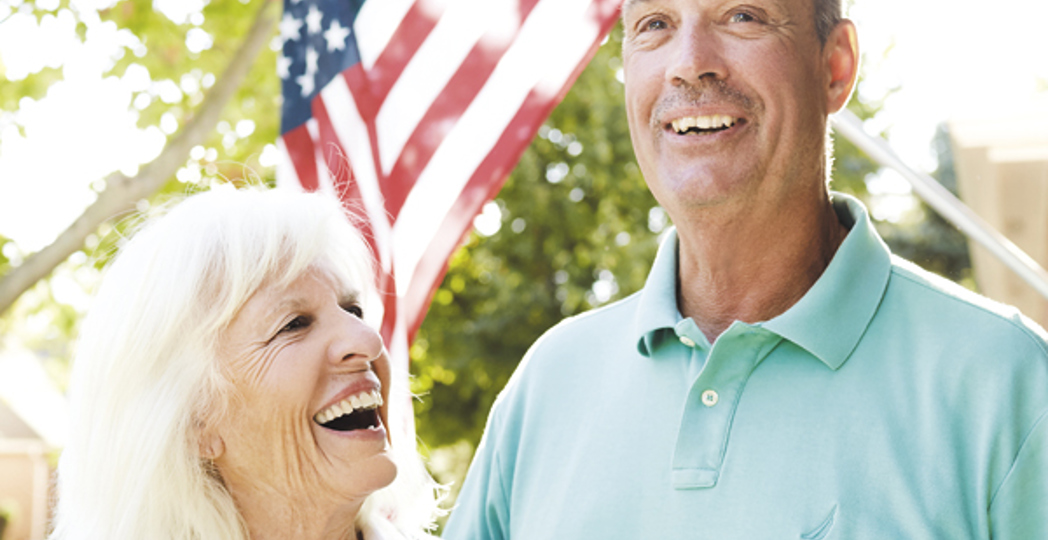How To Find The Right Home To Retire To
by Kristen Hampshire | Nov. 18, 2019 | 1:00 PM

The Avon Lake condominium that Jeff Chase, 73, and his wife Tommye, 71, live in today has given them the freedom to travel to Europe and spend days on the golf course without worrying about yard work while still offering the comfort of a home in the community they love.
Retiring to a place in Florida was off the table.
“We love Cleveland — we are not leaving,” Chase says. “We go downtown all the time, we have tickets to the Broadway series, and fall is beautiful.”
Their condo, which they moved into in 2017 after downsizing, has stairs that lead to three bedrooms.
“There are nine steps, and our theory is, we are going to keep climbing steps until we can’t climb them,” he says. “We are active. We ride bikes, my wife goes to the gym and I’m coaching football, so I’m running around with high school kids. You have to just keep moving.”
Chase also plays as many as 27 holes of golf a day.
Retirement living can look like this — a condo where the living is a little easier with a homeowners’ association managing outdoor maintenance and less space to care for indoors, freeing up more time for enjoying other things in life.
It can mean moving into a community that offers independent living and a continuum of care, so there’s no worry about supporting one’s health as life goes on.
And, if the decision is to age in place, there are home care options that allow for staying put in a home but getting extra aid and social benefits, as needed.
Choosing one over the other can be daunting and depends on needs, but Chase was ready to downsize after losing his first wife three years ago.
They had already begun the process of streamlining their household before her passing. Eventually, he began to rebuild and was prepared to move on — this time to a condo that he and Tommye chose.
“We found a place that was ready-made for us,” he says.
Finding Community
Mary Reisinger, 94, lives up the street from her daughter at Sprenger Health’s Towne Center in Avon Lake — a campus that includes independent and assisted living, along with nursing care and a memory care center.
Reisinger admits she wasn’t sure about the decision to move there at first.
“I had a lovely home on the beach that I loved for 40 years,” she says of her hometown Vermilion.
But, once she visited Towne Center, she felt differently.
“When we walked in, I loved it,” she says. “Of course, I was really nervous because I don’t like not knowing anyone, but I have formed some wonderful friendships here. I love my apartment, and it’s filled with my antique furniture.”
While she could opt for dining plans, she prefers the independence and flexibility also offered at Towne Center.
“I still cook my own meals and do my own thing,” she says.
Her two-bedroom, two-bathroom apartment includes a living room, a utility room so she can do her own laundry and a small porch.
And a real positive is the cleaning service provided every two weeks. She also really appreciates the sense of community and social opportunities at Towne Center.
“I love that,” she says. “I’m a happy person, and I make friends easily. There are about 15 of us who like to meet in the morning, and they have muffins, cereal and coffee for us, and we have gotten to be a friendly group. We have met each other’s children.”
There’s even happy hour, Reisinger quips.
Independent living, or choosing a campus with a continuum of care, is an option that appeals to many families when a parent in their retirement years and beyond requires more care than they can manage alone.
That care could be simply regular socialization, but usually it means help with cooking, cleaning and other support.
“We usually recommend that people ask themselves, ‘Are you lonely? Do you feel isolated?’ ” says Shannon Kuhn, regional administrator at Sprenger Health. “Adult children can feel overwhelmed by having to spend time with their parents and also having to run all the errands — there’s not enough time in the day. So, moving to a community can free up adult children to spend quality time with their parents. And they can have more of a sense of community and form friendships.”
Kuhn says most residents rhetorically ask why they didn’t choose a facility such as Towne Center sooner.
The key is to choose the right campus, and that requires visiting several and tuning in on how each environment feels.
“How does the energy feel? How do you feel in the facility?” Kuhn recommends asking yourself.
She also recommends being upfront in your questions to the facility’s staff, including asking about employee longevity and turnover
“That is an indication of whether the culture is thriving because happy staff equals happy residents,” she says.
Many services and features will be exactly the same when you tour facilities, Kuhn says. So, really, it’s the culture that makes all the difference in whether the campus will truly feel like home.
“For those who choose a campus like Towne Center, it’s about the ease for family and gaining another support system and a sense of community,” Kuhn says. “And, if at any point in life you need more services, you can access that on campus.”
Support Structures
There’s no place like home for the 90% of people who plan to age in place, according to data from AARP.
Seventy-seven percent of respondents in a 2018 Home and Community Preferences survey said they want to remain in their home or community for as long as possible. But that isn’t always feasible as they age and their needs expand.
This is where options such as McGregor Program for All-Inclusive Care for the Elderly, or PACE, can come into play.
Participants are welcomed into the McGregor community and can access the medical, rehabilitative, social and personal care they need while staying at home.
PACE participants can enjoy time at one of McGregor’s day health centers in Cleveland, Old Brooklyn or Warrensville Heights for one to five days per week.
“We provide transportation for participants to return to and from their homes,” says Elliot Cruz, development director. “[This helps support seniors] and gives peace of mind to the individuals who take care of them.”
PACE and similar programs take a community-based approach, meaning participants
stay at home in the surroundings they’ve always known — it’s where they prefer to be. But, when support is needed, they can tap into a network. Services are provided in-home and at the facilities.
“We personalize services to meet the needs of participants,” Cruz says.
Plus, the program is flexible. Some need assistance in the home while others want to access programming during the day to socialize with others and share in hobbies they enjoy.
Based on statistics that McGregor collected, those who participated in PACE extended their longevity by almost 24 months, reports Dr. Peter DeGolia, PACE medical director. The reasons: enhanced social and cultural connections and the comfort of being in a home environment.
“Our goal is to keep participants as healthy and independent as possible,” Cruz says.
Sizing Chart
For those who are recently retired or want to remain active like the Chases, a decision to downsize may be the right fit.
But selling the family home and consolidating your entire life can be emotional. All the belongings, the memories — and the thought of sorting, purging, storing, packing and moving is overwhelming. But there is help to get through the process.
Mike Terrell, owner and moving manager at Informed Senior Moves in Westlake, says his role is not only to help people plan their move and organize their belongings, but also to create a floor plan for the next home — and simply to listen.
“People have all those memories when they have lived in a home for 40 years or longer,” he relates. “I let them talk and share their thoughts so they can relax.”
A downsize to a right-sized home for retirement can be achieved without the stress.
“It’s about taking it one step at a time,” Terrell says.
That can include creating staging areas so people can make decisions about what to keep, sell or donate.
Having the floor plan of where you’re moving to can make those decisions easier, as well.
“We can figure out what exactly will fit in their new home, whether it’s a smaller house, an apartment or a condo,” Terrell says.
Before choosing a new home to live in, Terrell says the most important factors are location and mobility.
“Certainly, you want to choose a place where you feel comfortable — somewhere near friends or family, by a church or places where you enjoy socializing,” he says. “Beyond that, consider mobility and your capabilities. Most folks we work with are moving to places with no thresholds or stairs — just safer environments.”
While Chase and his wife choose a condo with stairs, determining that the challenge to stay active would keep them that way, it’s still a low-maintenance space compared to a large, traditional home. Still allowing the couple to stay in the same community, this downsize move is an ideal way to live out their retirement.
“We still have a little bit of dirt to dig in, so to speak, which we both enjoy,” Chase says. “But the worry-free living was the motivator. Don’t be afraid to make the move.”
Trending
-
1
-
2
-
3
-
4
-
5










